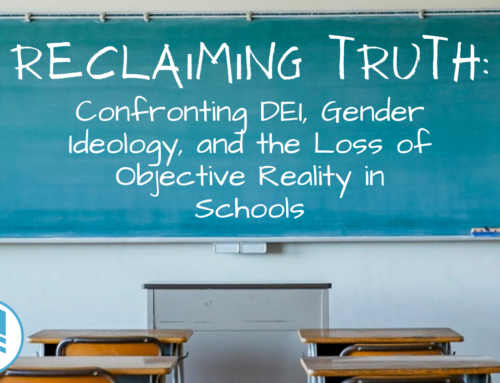
Schools are a little bit like the cereal aisle in your local grocery store.
Tons of brands, and too many flavors within each brand to choose from. You’re not alone if you’re developing an acute case of decision fatigue while hunting for your perfect school choice!
We’re here to break it down for you. (Schools, not cereal. At least not in this article.)
Think of it this way: there are two main “brands” of schools that most types fall under—public and private. The main difference is where they get their funds.
Rasmussen University explains, “Almost every type of school can be sorted into the public or private category based on its funding. Public schools receive their funding from the government and private schools receive funding anywhere else.”
Under these two main “brands” – public and private – you’ll find even more types, or “flavors” of schools.
Today we’re zeroing in on the most common types of public schools.
That’s right, we’re perusing only the aisle of government-funded, tuition-free education options today. No coupons needed.
Here’s to finding one that suits your taste!
Traditional Public School
Traditional public schools are probably what most people think of when they hear “public school.” They’re still the most common type of public school out there.
In most cases, you have to live within the school’s boundary map to attend a traditional public school. Boundaries are sometimes determined by zip code, sometimes by zoning.
Traditional public schools “accept all students, regardless of their previous academic performance or special learning needs,” says School Choice Week. They don’t use any kind of entrance exams, making them an extremely accessible option for students of all ability levels. If you live within the district, you can attend.
In some states, you can exercise what’s known as “public school choice” and send your child to another public school outside your district. Parents often prefer this choice if their child’s needs don’t fit what their home district offers. It’s not a widely used option…mostly because it isn’t widely available. In 2016, the National Center for Education Statistics found that public school choice was available to only 41% of students in grades 1-12.
In traditional public schools, the final authority for curriculum development rests with the state. But districts still have some decision-making power. “The state…has the authority to impose limits and obligations on both local school districts and parents,” law professor Julie Underwood says. District school boards work within those limits and obligations.
How traditional public schools manage their funds depends on the district. Some districts are under “school-based management,” reserving more decision-making power for principals and the school itself. Others operate under centrally managed approaches where the district’s central office financial team makes most of the decisions.
Traditional public schools are often valued for their accessibility and familiarity. Multiple generations in your family probably relate to a traditional public school experience, and there’s no need to stress over whether your child can access a similar education. They may even sit under some of the same teachers you did!
Charter Schools
Charter schools are publicly funded, but privately managed. They tend to have more freedom over budget decisions, but with that freedom often comes the price of heavy scrutiny. Because of this tradeoff, Method Schools reports, “Charters end up needing to meticulously keep track of how funded money is spent.”
There is a payoff though: the better proof of performance a charter school can offer, the more likely they are to stay “in business.”
Charter schools do not accept students based on districts. In fact, charter schools are open to the public. In some cases, the demand is so great that they use a lottery system to pick students. They don’t have admission requirements or entrance exams. Students can attend regardless of their academic abilities.
To balance the level of independence that charter schools enjoy, they have to adhere to standards set by strict regulating bodies. Traditional schools follow criteria developed by state school boards and national standards. Charter schools, however, are much more flexible. Method School explains, “Instead of being fixed to the state board, charters usually have an independent board that lays out a set of standards and curricula. Once those standards are approved, charter schools need to uphold their charter in order to secure [and maintain] state funding.”
Parents and educators alike often value charter schools for their heavy emphasis on quality and rigor. If they’re failing in their mission, they will lose funding and close.
They have to stay exceptional to compete.
That standard is a comfort to parents who don’t want to risk the quality of their child’s education.
Magnet Schools
Magnet schools are different from other public schools when it comes to the volume of their funds. “They receive additional funding to enable them to spend more money on their students, supplies, teachers, and educational programs,” says Public School Review. This means they can develop specialized programs for students.
Specialization is what magnet schools do best.
Most magnet schools focus on STEM topics (Science, Technology, Engineering, and Math). According to Public School Review, magnet schools can also focus on the arts, and vocational or career paths. They sometimes use distinct educational models such as Montessori, “a method of education that is based on self-directed activity, hands-on learning and collaborative play.” Both the content of the education and the methods magnet schools implement equip students with progressive and work-force oriented skills.
Like charter schools, magnet schools are open to the public, regardless of district. If demand is too high, they might institute specialized admission requirements or a lottery to limit admissions. U.S News explains, “Thomas Jefferson High School for Science and Technology in Virginia, rated one of the top high schools in America, includes a problem-solving essay as part of the application. Schools that focus on performing arts, such as Duke Ellington School of the Arts in Washington, D.C., can require an audition or portfolio review.”
Unlike charter schools, magnet schools do not have private oversight. They remain under the same administrative bodies as traditional public schools. Even with the same administration, they still have a unique ability to cater to students with specialized interests, making them a favorite of parents who want a non-traditional approach to education.
Virtual Public Schools
Some public schools offer partial or fully-online coursework for students who want to learn virtually.
According to School Choice Week, virtual schools are only available in 35 states. Virtual schools “have been established by state authorities, by school districts, or charter schools, meaning students can attend these schools full-time, tuition-free.”
While online public schools must accept all students, they do sometimes have a limited capacity. (Find out whether your State has Online Public School options with School Choice Week’s resource “The Ultimate Guide to Online School”.)
The financial structure of virtual public schools varies widely from state to state. Some states create separate infrastructures and funnel funds through it to the virtual school. In others, virtual public schools operate under the same financial infrastructure that other public schools do.
Sometimes, a state allows the creation of virtual programs and has those programs bill each students’ local public school district. Conversely, as in the case of Florida’s virtual school, some virtual schools function and handle finances as separate school districts.
Depending on the state, different sources may influence the curriculum. For example, some states have both virtual charter school and virtual traditional school options. Charter schools have independent boards that set curriculum requirements while traditional public schools work within limits set by the state. Virtual school curricula will reflect the terms of the managing school, whether that be charter or traditional.
Virtual schools can differ in their program offerings. Some virtual schools are completely online. Others have “blended programs.” “Blended programs are online schools that offer on-site locations that students attend from time to time,” says School Choice Week. “GOAL Academy in Colorado, for instance, has drop-in centers.” At drop-in centers, your child can “drop in” for tutoring, activities, or time with their peers.
The flexibility of virtual schools makes them a natural choice for many parents. This option takes a little extra parental oversight, but could open up countless new opportunities in your child’s schedule and life.
Options, Options, and More Options
From the traditional public option to charters, magnets, and virtual schools—these four main types of public schools serve a vast variety of educational needs in time-tested, creative, flexible, and functional ways.
If you’re school shopping and you want to go the public route, you’re now equipped to narrow down your choices to find a school that best fits your family.
Now if only finding your favorite cereal was so simple!




